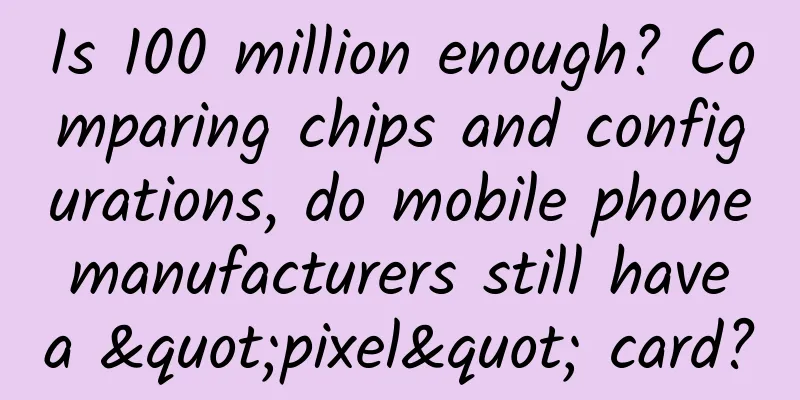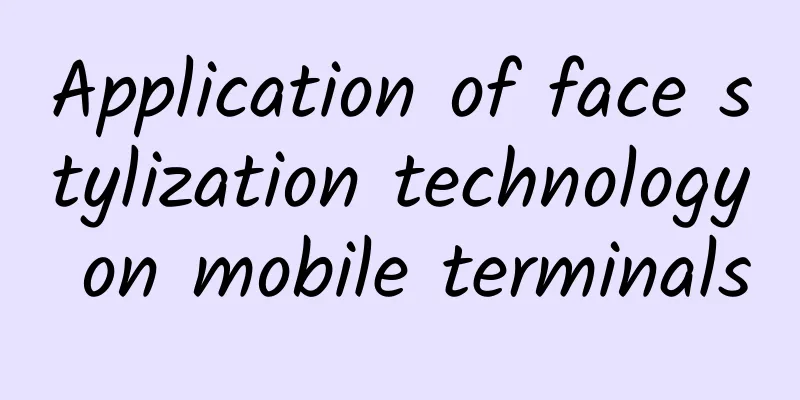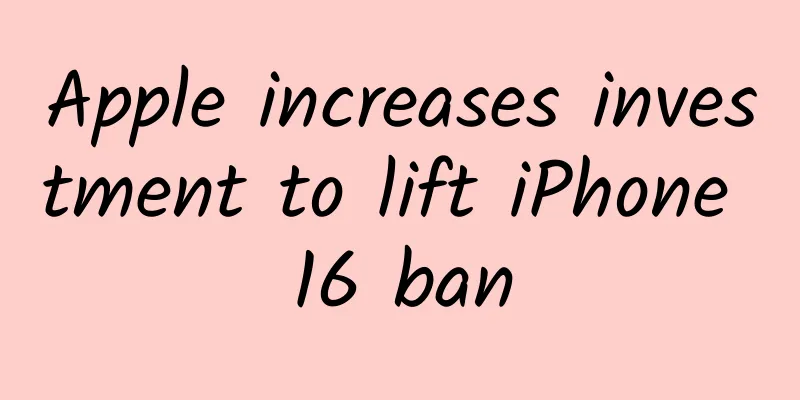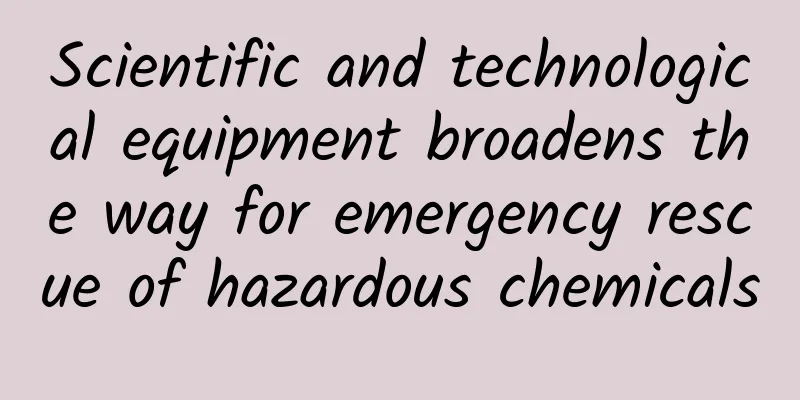Quantum entanglement: What is the "ghostly action at a distance"?
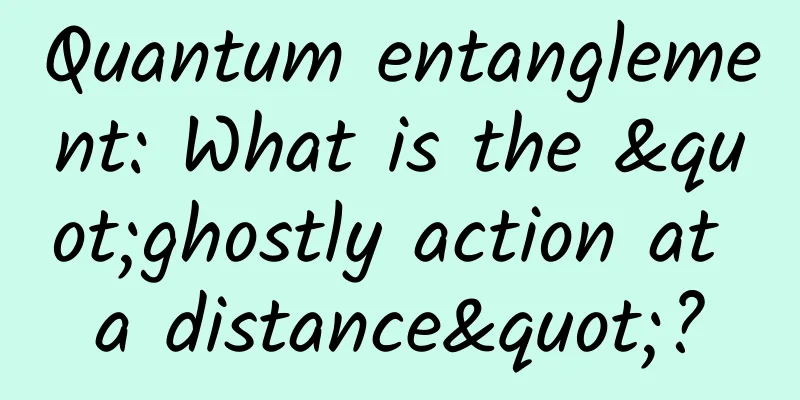
|
Of all the strange quantum effects, quantum entanglement is perhaps the most difficult to understand. In popular books, it is often described as "a certain connection between two microscopic particles. No matter how far apart they are, if the properties of one particle change, the other can instantly 'sense' its state and change. But it does not violate the theory of relativity." This phenomenon was called "spooky action at a distance" by Einstein. This sentence of Einstein has even become the most famous slogan of quantum entanglement. The exploration of quantum entanglement originated from a famous paper published by Einstein and two collaborators on the completeness of quantum mechanics, which was later called the EPR paradox. In 1964, British physicist John Stewart Bell proposed the Bell theorem and Bell inequality, making the EPR paradox a question that can be experimentally tested - is quantum non-local? The original title of this article is "There is no'spooky action at a distance'", because Einstein considered it from the perspective of locality, and if we recognize the non-locality of quantum, entanglement is not a real "action", and this counter-intuitiveness reflects the biggest difference between the microscopic world and the macroscopic world of quantum. For decades, in order to test the non-locality of quantum, physicists have found and filled various detection loopholes based on Bell's theory, and quantum mechanics has passed the test again and again. Quantum entanglement exists, but we still cannot fully understand the "essence" of quantum today. This article is authorized to be excerpted from "Beyond Weird: Why everhting you thought you knew about quantum physics is different" (Guangxi Normal University Press, 2022.1), and the title is added by the editor. By Philip Ball Translated by Ding Jiaqi We must never forget that "reality", like "wave" and "consciousness", are artificial words. Our task is to learn to use them correctly, that is, unambiguously and consistently. —Niels Bohr Laser, the most powerful weapon for exploring quantum mechanics It could be argued that the modern renaissance of quantum mechanics began in the 1960s, when John Bell proposed his experiments on entanglement, but just as it did in the early years of the 20th century, when Planck and Einstein developed quantum mechanics itself, it took a while for the world to catch up. Einstein also played an important role in this quantum mechanics renaissance, albeit indirectly. In 1917, he pointed out that, according to the quantum mechanical properties of light emitted by atoms excited by energy, if there is a series of such excited atoms, all the photons may be released at once like an avalanche, and their waveforms are completely synchronized. In 1959, this effect was named "light-amplified stimulated emission of radiation", and this cumbersome term was condensed into the easy-to-pronounce acronym "LASER". In the early 1960s, researchers found a way to realize lasers experimentally, first to obtain stimulated amplification of microwaves and then to obtain visible light. Lasers allow scientists to have extremely precise control over photons, making them the core device that makes quantum thought experiments a reality. They have played a greater role than anything else in helping us break through simple thinking and begin to actually explore the basic principles of quantum mechanics. By the 1970s, scientists were able to use lasers to perform a Bell test for quantum entanglement. This extremely difficult experiment was first attempted by physicists John Clauser and Stuart Freedman at the University of California, Berkeley. They used lasers to excite calcium atoms, inducing a pair of entangled photons with correlated polarizations, and measured the EPR correlation between the polarizations of the two photons using the "four-state" setup I described in the previous chapter. Clauser and Friedman found that the correlation between entangled photons is higher than the value allowed by the hidden variable theory in Bell's theorem. But their results are not completely clear. For example, they did not conduct enough experiments to make the statistical results completely convincing. In 1982, Alain Aspect and his collaborators at the University of Paris-Sud in France conducted a more deterministic experiment, proving that entanglement is consistent with quantum mechanics but not with hidden variable theory. They also used laser and fiber optic technology to generate and manipulate entangled photons. As mentioned above, the Bell test requires enumerating the correlations of particles at different measurement angles. Asper and his colleagues successfully filled a loophole in Bell's argument: the filters that measure the polarization of photons may interact (due to some unknown mechanism) and thus artificially enhance the measured quantum correlations. The French team can make the filters change direction quickly, with an interval shorter than the time it takes for the photons to leave and arrive at the filters, so another filter cannot affect this filter in such a short time and adjust its direction setting. So it seems that quantum mechanics is right. But what does entanglement mean in this case? The mystery of the EPR experiment, says N. David Mermin, is that "it presents us with a series of correlations that simply cannot be explained." Quantum mechanics can only give us an indication of the results, but is that enough? No ghosts, no distance First, we have to face this "paradox". If the properties of a particle are uncertain before being measured, then it seems that instantaneous communication does occur between the two particles in the EPR experiment. The unobserved particle seems to immediately "know" what polarization or spin the measurement of the other particle has produced, and takes the opposite direction. However, contrary to what Einstein imagined, this is not a real "action" or "ghostly", and the whole process has nothing to do with "distance", and naturally does not violate the special theory of relativity. The theory of relativity states that an event in one place cannot exert a "causal" influence on an event in another place faster than the speed of light. The so-called "causality" means that something Alice does determines the phenomenon Bob sees. Only in this way can Alice communicate with Bob by using the correlation between the two people's observations. Now consider David Bohm's version of the EPR experiment, where the spins of the two particles are correlated. Alice chooses the direction of her observations (i.e. the relative angle of the two magnets in the Stern-Gerlach spin measurement), and her measurements are then correlated with Bob's. But they can only deduce this if they have compared each other's measurements - and comparing results requires exchanging information by classical means, which cannot exceed the speed of light. Bob cannot know Alice's measurements faster than the speed of light. So while Alice and Bob may each seem to infer something for a split second—you could call it “spooky action at a distance”—they can’t use this spooky connection to transfer any information faster than the speed of light. Let’s assume that Alice’s and Bob’s particles are anti-correlated (that is, they move in opposite directions), and Alice tries to use this relationship to instantaneously transfer information to Bob by changing the direction of her magnet. If Bob measures spin up, he doesn’t know if that’s because Alice’s particle spins down and her magnet moves in the same direction as his, or because Alice’s particle spins up but her magnet moves in the opposite direction as his, or because her magnet is at right angles to Bob’s and their particles are unrelated. Bob’s subsequent measurements will all read up or down, but he won’t be able to infer anything about Alice’s magnet. Wait, doesn't this still mean that Alice, through her choice, caused Bob's measurement, but Bob couldn't understand what information Alice conveyed? No. Alice didn't "cause" Bob's particle to spin up at all, because she couldn't even fix the spin of her particle! It could be up or down randomly. Alice doesn't determine what Bob observes: there is no "action at a distance", and special relativity is still intact. But when they compared the results, some kind of correlation still emerged. Where did this correlation come from? As Mermin said, "there is no explanation" - or we can say it comes from some "quantum nature" that we can't express. While the above argument is scientifically sound, you can’t help but feel like we’ve violated relativity in spirit and just made up a logical argument to deny it. Even if relativity is (narrowly) intact, there’s something uncanny about quantum entanglement, because it upends our preconceptions of “here” and “there,” messing with time and space. Testing for various vulnerabilities in nonlocality It took scientists many years to figure out where Einstein's reasoning about the EPR "paradox" was wrong. The problem is that common sense in quantum mechanics often has problems behind it. Einstein and his colleagues made a very self-evident "locality assumption": the properties of a particle are localized only on that particle, and what happens here must propagate through space to affect what happens there. This seems so self-evident that it doesn't seem like an assumption at all. However, it is precisely this locality that is subverted by quantum entanglement, which is why it is completely wrong to view it from the perspective of "spooky action at a distance". We cannot regard particles A and B in the EPR experiment as two separate entities, even if they are separated in space. In quantum mechanics, entanglement makes these two particles different parts of the same object. Or in other words, the spin of particle A is not only located here at A, just like the red color of a cricket ball is confined to the cricket ball. In quantum mechanics, properties can be non-local, and only if we first accept Einstein's assumption of locality do we need to say that the measurement result of particle A will "affect" particle B. The whole concept of quantum non-locality is different from this. In fact, what we are discussing here is another quantum superposition state. As mentioned earlier, superposition refers to a situation where the measurement of a quantum object may produce two or more possible results, but we do not know which result will be before the measurement, only the relative probability of each of them appearing. Entanglement is the same idea, but it is applied to two or more particles: particle A spins up and particle B spins down, which is the superposition of two states with the exact opposite configuration. Although the two particles are separated from each other, they must still be described by the same wave function. We cannot disassemble this wave function into some combination of the wave functions of two independent particles. Quantum mechanics can easily accept this idea without blinking an eye: just write down its mathematical formula. The problem is how to illustrate its meaning visually. Because quantum nonlocality is so counterintuitive, scientists have spent a lot of effort to prove it. Could it be that we have overlooked something else that has created an illusion of nonlocality? To test one such loophole, Aspe conducted an experiment that was the beginning of a series of studies that are still ongoing. Aspe and his collaborators considered and ruled out the possibility that there was a very fast but slower-than-light interaction between the detectors, a possibility now known as the "locality loophole" or "communication loophole." What kind of influence would have such an effect, you might ask? Who knows? After all, the quantum world is full of surprises. You can't say something is impossible until you try it. Today, we can eliminate this loophole with even greater confidence than Asper did. We can increase the distance between the two detectors (containing the filters that measure the photons’ polarization) so that no signal slower than the speed of light can pass between them until the entire experiment is complete. In 1998, researchers at the University of Innsbruck in Austria increased the distance between the two detectors to 400 meters, giving advanced optical technology enough time to complete the measurement before any communication passes through the measurement point. They found that the experimental results did not change. The other is the "free choice" loophole, that is, is it possible that once the particles are entangled, they have some local property "programmed into them" that affects the detector settings when they are measured? This possibility was ruled out in 2010 by an experiment (which also ruled out the locality loophole). The experiment ensured that the detectors were not only far away from each other, but also from the light source: the light source and one detector were located on two islands in the Canary Islands. These experiments also proved another feature of quantum effects such as entanglement: they can persist across macroscopically large distances. This is one reason why it is not accurate to say that quantum mechanics is only about "small objects" - it also works between you and me, no matter where you are. There is also a loophole called the "fair sampling loophole" or "detection loophole." It refers to the possibility that some localized properties of the particles bias the detector's detection, so that our sampling is not truly random. In any Bell experiment, the detection is imperfect: only a fraction of the particles will be measured. To get reliable results, the particles measured must be truly representative of the entire population. To eliminate the detection loophole, we need a very high detection efficiency so that we can say with confidence that we have observed the entire population of particles. Indeed, it would be very unlucky if the current experimental results were completely consistent with the predictions of quantum mechanics simply because our detection of particles was not efficient enough, and once we improved our detection methods we would see results that deviated from the predictions. But again, who knows? So in 2013, Anton Zeilinger of the University of Vienna led a research team to do an experiment. They used a more efficient method to detect particles (photons), capturing 75% of the photons. For the type of EPR experiment described above, this efficiency is still not enough to be 100% sure that Bell's inequality is violated, but Zeilinger and his colleagues used a variant of Bell's theorem that cleverly included the possible effects of unmeasured particles. Therefore, as long as the measurement efficiency is higher than 67%, it is enough to prove that quantum mechanics is correct. Therefore, Zeilinger et al.'s experiment has the ability to eliminate detection loopholes, and in fact they did it. Are there other loopholes? It’s getting harder to come up with other plausible loopholes, but what if different loopholes work in different experiments? That’s the ultimate hope. Again, we should test that. Now the goal is to plug several different loopholes at once. In 2015, a team led by Ronald Hanson at Delft University of Technology in the Netherlands performed a tour de force experiment that eliminated both the communication loophole and the detection loophole. The experiment used entangled electrons rather than photons, because electrons are easier to detect than photons, thus avoiding the detection loophole. The experiment linked the entanglement of the electrons with that of the photons, which can be sent along optical fibers for long distances (1.3 kilometers in this experiment), thus also plugging the communication loophole. Teams in Austria and another in Boulder, Colorado, have also performed experiments that plugged both loopholes at once. The Dutch team's experimental results were naturally widely reported with headlines such as "Einstein was wrong, spooky action at a distance is real." But now you know that the situation is not that simple. Spacetime and entanglement Some scientists have proposed that quantum entanglement reflects interdependence across space, which stitches together the fabric of space and time to form a "spacetime" network that allows us to talk about the relationship between one part of "spacetime" and another, but this idea remains a highly speculative theoretical picture. Spacetime is a four-dimensional structure described by Einstein's general theory of relativity, which says it has a specific shape. It is the shape of spacetime that defines gravity: mass causes spacetime to bend, and the movement of objects caused by the bending of spacetime makes gravity manifest. In other words, how quantum mechanics reconciles with the theory of gravity supported by general relativity has long been a mystery, and entanglement may be the key to solving this mystery. In some simple models of the quantum universe, a phenomenon that looks a lot like gravity can arise spontaneously based on quantum entanglement alone. Physicist Juan Martín Maldacena has shown that an entangled quantum universe model with only two dimensions and no gravity can simulate the same physics as a three-dimensional “empty” universe filled with spacetime structure (which is necessary to describe gravity according to general relativity). This description is a bit of a mouthful, but it is equivalent to saying that taking away the entanglement in the two-dimensional model is equivalent to releasing the spacetime in the three-dimensional model. Or, in other words, the spacetime and gravity in the three-dimensional universe are like the projection of quantum entanglement on the surface of its two-dimensional boundary. If there is entanglement all over the boundary, spacetime will be torn apart and the three-dimensional universe will fall apart. Maldacena’s theory is too simple to describe what happens in our own universe, so it is only preliminary. But many researchers suspect that this deep connection between entanglement and spacetime reveals something about the relationship between quantum mechanics and general relativity—that is, how we need to change our view of spacetime if we want to make quantum theory and general relativity consistent. David Bohm anticipated this decades ago, proposing that quantum theory implies some kind of order connected to what we call spacetime, but it is richer. Some researchers now think that spacetime may actually be made of these interconnections formed by quantum entanglement; others think it is more complicated. However these ideas develop, there is now a growing consensus among physicists that a theory of quantum gravity cannot emerge from clever mathematical derivations alone, but will require us to look at quantum mechanics and general relativity in a new way. Spacetime is just a structure we set up to describe how one thing affects another, and to express the limits of those interactions. It is an emergent property of cause and effect. And as we have seen, quantum mechanics forces us to revise our preconceptions about causality. Not only do nonlocality, entanglement, and superposition allow objects to be connected to each other in spite of their spatial separation, they also give rise to weird phenomena related to time, such as creating the illusion of "reverse causation" in time (or perhaps more than that?), or allowing the causal order of two events to be superimposed (so it's not certain which happened first). Perhaps the causal structure of the universe is a concept even more fundamental than quantum theory and general relativity. We will see later why such a causal structure is an excellent starting point for reconstructing quantum mechanics from scratch, making its basic axioms more physically meaningful while reducing its abstractness and mathematics. "When I looked at the ball through the round window, it was red" Three years after Bell proposed Bell's theorem in 1967, which introduced the concept of quantum nonlocality, mathematicians Simon B. Kochen and Ernst Specker discovered another counterintuitive aspect of quantum mechanics related to nonlocality. Their work is as profound as Bell's theorem, but has only recently begun to receive much attention (Bell actually reached the same understanding as Cochen and Specker, and he formulated a proof in 1966, but published it later). Cohen and Speckel point out that the results of quantum measurements can depend on the context in which they are performed. This is subtly different from "different types of experiments on essentially the same system (such as the same double-slit experiment with or without a 'path detector') will produce different results." It is to say that if we look at a quantum object through different windows, we will see different things. If you want to count how many white balls and black balls there are in a jar, you will get the same answer whether you count the white balls first or the black balls first, whether you count them in rows of five or whether you weigh the two colors in two piles. But in quantum mechanics, even if you ask the same question ("how many white balls are there and how many black balls are there"), the answer you get may depend on the measurement method. We have seen in the previous section that making measurements in different orders (measuring this item first or that item first) will give different results. This is because in order to extract the value of the observable property from the wave function, it is necessary to perform mathematical operations on it, and the operations in different measurement orders are not commutative. The Cohen-Speckel theorem specifies what happens as a result of this dependence on the environment. In effect, it is also a corollary of the fact that the properties we choose not to measure affect the properties we do measure. It asks what happens outside the window we choose to observe a quantum system through. Speckel tells a story about this theorem. An Assyrian prophet who didn’t want his young daughter to marry a suitor he thought was unworthy set a challenge for the suitors. He placed three sealed boxes in front of the suitors, each of which might contain gems, but might not. No matter how you predict whether the three boxes contain gems or not, there must be at least two boxes in the same state: either both are empty or both contain gems (readers only need to think about it for a moment to understand that this must be the case). The prophet asked the suitors to open the two boxes that they thought were the same. If they were right, the suitors could marry the prophet’s daughter. But these suitors would never guess right! Of the two boxes they opened, one would always be empty, and the other would contain gems. How could this be done? Even based on probability alone, there is a guarantee that someone will guess right at some point, right? Finally, the prophet's daughter, who couldn't wait to get married, intervened in the process of answering questions by a handsome young man, the son of a prophet. However, instead of opening the two boxes that were in the same state as predicted by the prophet's son, she opened a box that he guessed contained gems and another box that he guessed was empty, and both guesses were correct. The prophet refuted it weakly, but finally had to admit that the suitor had made two correct guesses and married his daughter to him. The reason why the previous suitors failed to guess correctly is that these boxes are quantum boxes, and the prophet made them entangled and correlated, so that once one of the two boxes is opened, there is a gem inside, and the other is empty, and vice versa. In this way, it is impossible for anyone to complete the challenge set by the prophet and show that they guessed correctly. What the daughter did was to make another set of measurements on the same system, which revealed that the challenger's guess was correct. This shows the quantum "background dependence" (or "intertextuality", contextuality). Like Bell's theorem, the Cohen-Speckel theorem lists what hidden variables (hypothetical hidden factors that make the properties of quantum objects fixed from the outset, whether they are measured or not) must look like in order for an experiment to produce results that are exactly the same as the predictions of quantum mechanics. As mentioned earlier, hidden variables are local: they apply specifically to a single object, just like the properties of macroscopic objects. Bell's theorem provides theoretical tools for evaluating whether such local hidden variables can explain experimental results - the conclusion of the experiment is always that they cannot. With hidden variables, Cohen and Speckel raised a more serious problem. Their theorem showed that you can't produce the same predictions as quantum mechanics (such as the correlation of properties of two particles) with hidden variables that only relate to the system being studied. Once you introduce hidden variables into a system, you must also consider some hidden variables of the instrument used to study the system. In other words, you can never say "this system has such and such properties", you can only say that it has these properties in a certain experimental context. Change the context, and you change all the hidden variable descriptions. So you can't use hidden variables to describe "what's real" about a particle in all situations. In the microscopic world, you can't say "the ball is red" as you can in the macroscopic world, you can only say "when I look at the ball through the round window, it's red." Under those conditions, it's "really" red (but that's the extent to which we say something "really" is what it is). But it's also "true" to say it's green when you look at it through the square window. OK, but what color is the ball "really"? Cohen and Speckel argue that you can't go any further. In other words, all the yes-no statements we can conceive of about a quantum object—that it's red, that it moves at 10 mph, that it rotates once a second, and so on—can't all be answered with a definite yes or no at the same time. We can't know all of them at once—because they don't exist at the same time. For some obscure reason, experimental studies of quantum background dependence came two or three decades later than those of quantum nonlocality. The first experiments to clearly confirm the Cohen-Speckel theorem did not appear until 2011. There has long been suspicion that quantum nonlocality and background dependence are somehow related. Dagomir Kaszlikowski of the National University of Singapore has suggested that they are just different expressions of the same thing—different aspects of a more fundamental “quantum essence” for which no better term has yet been found. Whatever it is called, this essence denies any “local reality” description of the quantum world, which is the view that objects have some definite, well-defined essential features inherent in themselves. In the quantum world, you simply cannot say, as you are used to in the classical world, “this thing here is like this, independent of everything else.” Kashlikowski and his colleagues showed that nonlocality and background dependence are in fact mutually exclusive: a system can exhibit either nonlocality or background dependence, but never both at the same time. In other words, “quantumness” can either allow a system to exhibit correlations in Bell-type experiments that exceed what the hidden variables can account for, or it can allow the system to exhibit dependence on the measurement background that exceeds what the hidden variables can account for; but it can’t do both at the same time. Kashlikowski and his colleagues call this phenomenon “behaviour monogamy”. So what is the “quantum essence” that causes quantum objects to choose between two counterintuitive behaviors? We don’t know. But just asking the question is a step forward in understanding quantum mechanics—and finding the right way to express a problem is always an important part of science. Special Tips 1. Go to the "Featured Column" at the bottom of the menu of the "Fanpu" WeChat public account to read a series of popular science articles on different topics. 2. Fanpu provides a function to search articles by month. Follow the official account and reply with the four-digit year + month, such as "1903", to get the article index for March 2019, and so on. Copyright statement: Personal forwarding is welcome. Any form of media or organization is not allowed to reprint or excerpt without authorization. For reprint authorization, please contact the backstage of the "Fanpu" WeChat public account. |
<<: In Ice Age, the squirrel finally ate the acorn! But that's not the case in reality
>>: During the epidemic, I can’t eat big fish and meat at home. Is it okay to eat 5 eggs a day?
Recommend
How can humans have high-quality sleep?
One third of a person's life is spent sleepin...
Mobile IM development: technology selection and common problems
[[134897]] I am currently working on an iOS IM SD...
Headline delivery: What to do if the account volume is unstable?
1. The account volume is unstable and the planned...
Volkswagen plans to cut 30,000 jobs and save $3.9 billion in expenses
Volkswagen announced on Friday that it will cut u...
Faced with 530 million yuan in investor claims, can Guoan still remove the ST label?
30 years ago, the famous Beijing Guoan Football C...
It’s the “sneezing” season again. What’s making me sneeze non-stop?
Spring is supposed to be a beautiful season full ...
5 Growth Hackers Behind Explosive App Marketing
Facebook acquired MSQRD (Masquerade), a special p...
Can we throw away “biodegradable plastics” as they will naturally degrade? Stop…
gossip Can “degradable plastic” be naturally degr...
Unfortunately passed away! A woman with cancer did not go to the hospital for treatment, but... Many people are still unaware of these misunderstandings
Expert of this article: Hu Zhongdong, deputy chie...
What kind of Xiaohongshu account needs to invest in French fries? How to vote?
dou+, becoming popular on Weibo, is equivalent to...
Case analysis: How to use video information flow in the e-commerce industry?
As the trend of short videos continues to deepen,...

